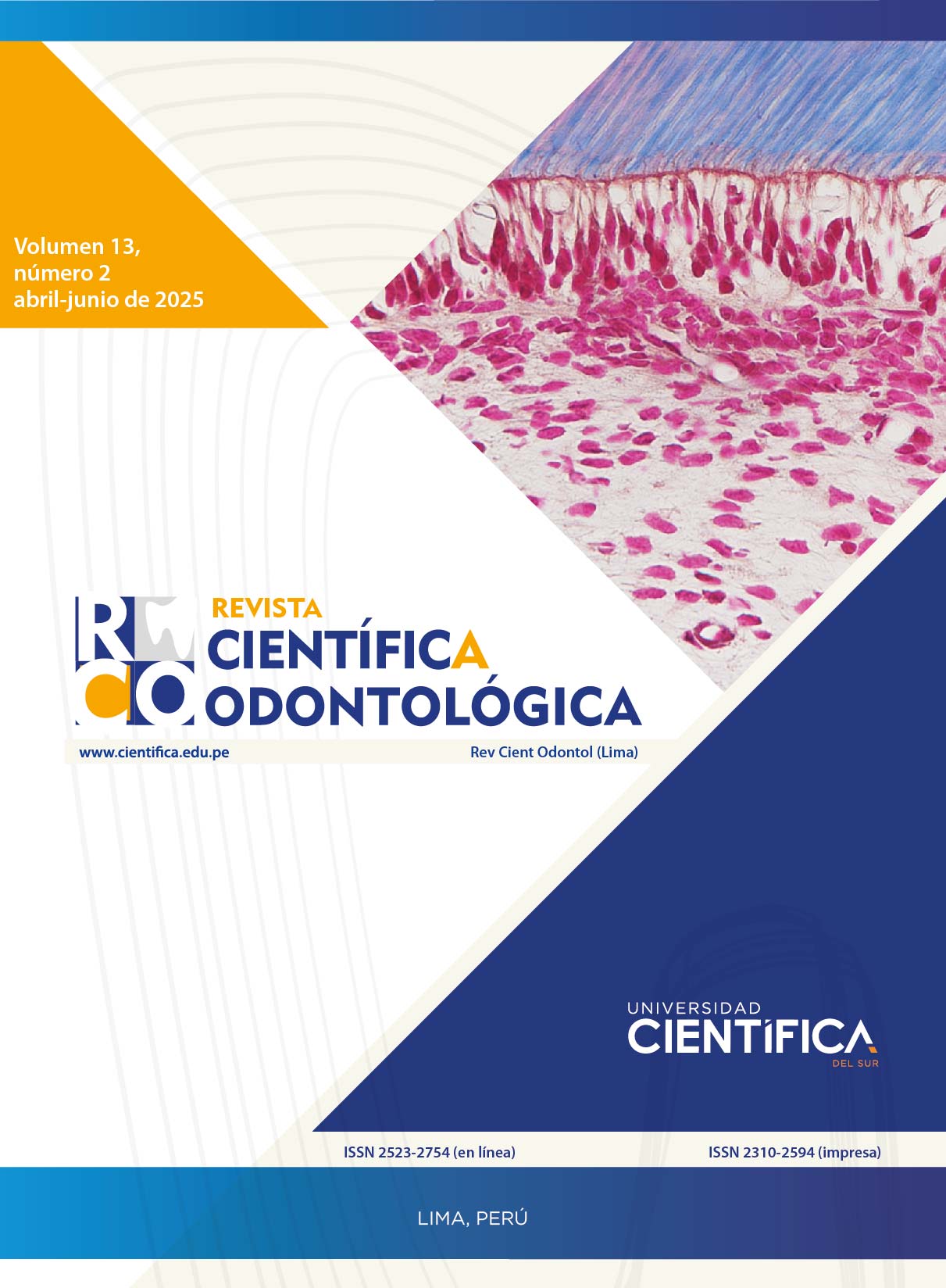ENAMEL MATRIX DERIVATIVE AND ROOT COVERAGE: A LITERATURE REVIEW
DOI:
https://doi.org/10.21142/2523-2754-1302-2025-244Keywords:
gingival recession, root coverage, enamel matrix derivative, mucogingival surgeryAbstract
Introduction: The use of enamel matrix derivative proteins, also known as Emdogain®, has revolutionized clinical practice in dentistry since the 90s. This biomaterial has demonstrated to promote periodontal tissues regeneration lost due to periodontal disease which persists as a public health problem, emerging as an effective alternative in treatments such as non-surgical periodontal therapy, treatment of furcation lesions, intraosseous defects, and more recently, its use has become especially popular in root coverage surgeries. Objective: Evaluate studies in reference to the use of enamel-derived matrix proteins in periodontal treatments, to offer a comprehensive and up-to-date vision of its impact and effectiveness. Materials and Methods: Systematic review was conducted about randomized clinical trials (RCTs) published between 2019 and 2024, using databases PubMed and Scopus, considering Clinical measurements performed in the studies. Results: The analyzed studies compared different surgical techniques for the treatment of gingival recessions, focusing on the percentage of root coverage (RC), clinical attachment gain (CAL), increase in gingival thickness (KTW), long-term stability, and postoperative pain (VAS). Conclusion: EMD significantly contributes to improvement of periodontal regeneration and long-term outcomes of root coverage surgeries, results obtained show a lot of variability. Randomized controlled trials are necessary to evaluate efficacy in different clinical contexts.
Downloads
Downloads
Published
Issue
Section
License

This work is licensed under a Creative Commons Attribution 4.0 International License.

Este obra está bajo una licencia de Creative Commons Reconocimiento 4.0 Internacional.












